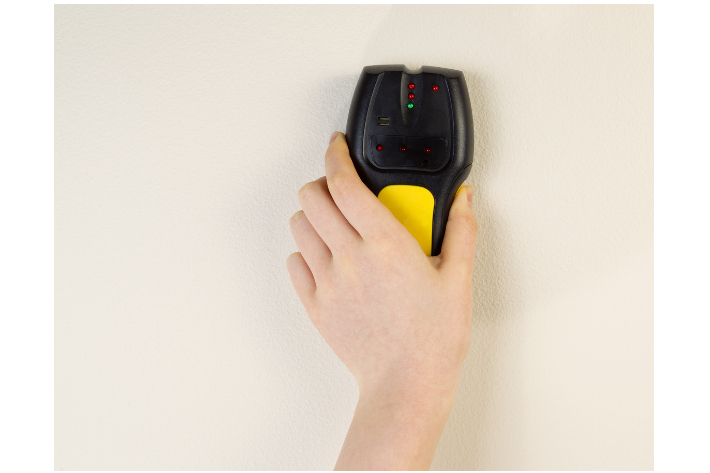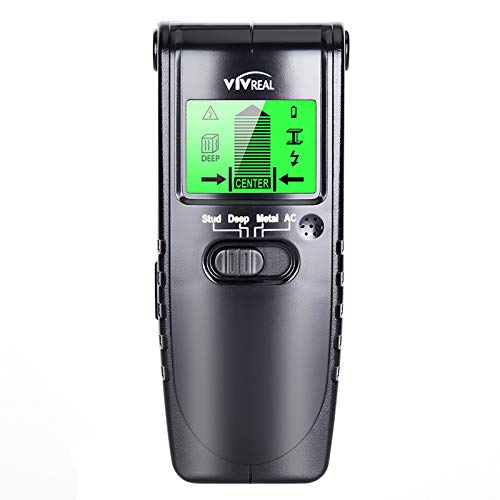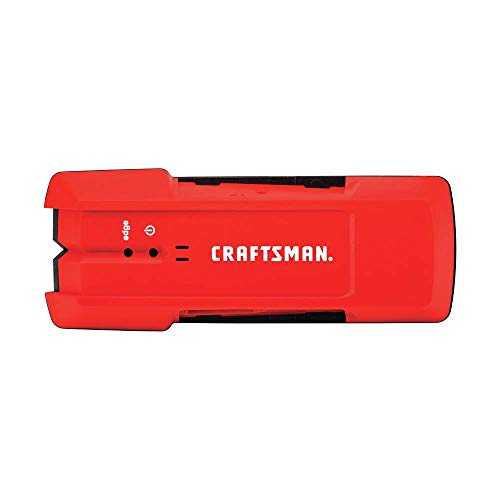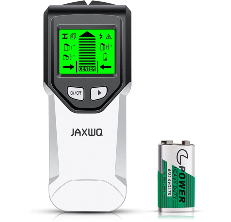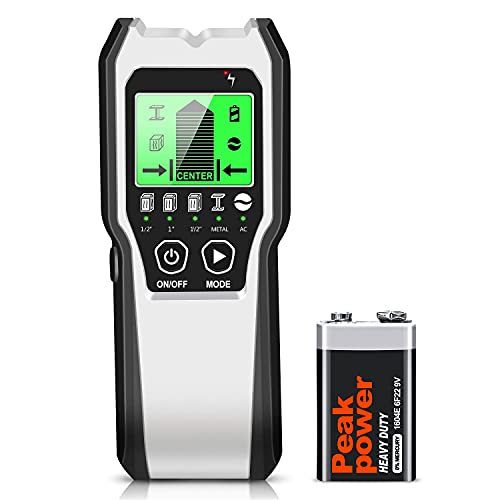- StoreProjects
- Free Plans and Projects
- Furniture Projects
- Jigs And Fixtures Projects
- Shop Projects
- SketchUp Models
- Shop Storage
- Workbenches
- Free Woodworking Downloads From Lee Valley
TechniquesToolsVideos- Premium Streaming Video Site
- Experts Guide to Gluing & Clamping Wood
- Mastering Built-In Furniture
- Simple Live-Edge Slab Table
- CNC – Designed for Woodworkers
- Milling Your Own Lumber
- Advanced Bandsaw Techniques
- I Can Do That! – Simple Woodworking Projects
- Woodwright’s Shop with Roy Underhill
- Tricks of the Trade
BlogOur content is meticulously curated through independent research, testing, reviews, and AI-driven recommendations, all designed to present you with the finest product choices. When you make a purchase through our links, it could result in us earning a commission.The Best Stud Finders to Help You Locate Hidden Framing Studs
Last updated: 10 Jul 2024
As every DIY enthusiast knows, you can't simply nail your paintings and decor on the walls and be done with it. First, you need to locate the framing studs hidden behind the walls so you can steer clear of them. To help you choose the right finder for your home renovation needs, we’ve compiled a list of the best stud finders of 2024. The Vivreal Stud Finder is our top pick for its versatility and simplicity, but you might want to check out our other recommendations as well as our buying guide before you make your decision.
- Best Overall: Vivreal Stud Finder Shop Now ➔
- Minimalist Pick: Craftsman Stud Finder Shop Now ➔
- Most Advanced: Jaxwq 5 in 1 Stud Finder Shop Now ➔
- Best Design: Folai Stud Finder Shop Now ➔
- Best Sensor: Black+Decker Auto-Leveling Stud Finder Shop Now ➔
View all ContentsThe Best Stud Finders of 2024
Best Overall
The Vivreal Wall Scanner is a smart device you can rely on. This smart device also has four scanning modes to accommodate your needs. Plus, it comes with a loud sound warning and an LCD screen to help you find the perfect spot for your new piece of art or furniture.
The scanner can also help you find rebar, pipes, and other metal objects behind walls, floors, ceilings, and other difficult-to-reach places, making it a handy tool for any home improvement project. Additionally, this easy-to-use scanner can be used by people of any skill level and provides extremely accurate results, making it the best overall stud finder on this list.
Pros
- Scans different types of walls with ease
- Easy-to-read LCD display
- Sound alert to accurately point out stud
Cons
- The center mark is a little off center
Minimalist Pick
The Craftsman Stud Finder is durable and long-lasting, able to withstand even the most challenging conditions. So whether your walls are covered in wallpaper or fabric, this stud finder will do the job. Since it can locate the edges of both wood and metal studs, you can be confident that you’ll find what you’re looking for.
The scanner’s interface is also very easy to use, making it suitable for new homeowners or contractors. This is not a complicated smart device, and you only need to hold it against the wall and slide until the light turns green, indicating that a stud has been found.
Pros
- Light-up indication for studs
- Easy-to-use design
- Water-resistant body for added durability
Cons
- Does not have an LCD display
Most Advanced
As its name suggests, this stud finder has five scanning modes, a microprocessor chip, and an HD LCD. With this stud finder, you’ll be able to quickly and easily find the edges and center of wood, metal, AC wires, and even pipes.
Its intelligent micro-sensor chip makes this scanner different from other stud finders on the market. With this chip, the stud finder can accurately and quickly locate whatever you’re looking for. Plus, the large LCD and sound alarm make it easy to find the exact location of the object you’re looking for. This scanner also comes with automatic calibration, allowing it to adjust anywhere on the wall and provide accurate results for the center of the studs.
Pros
- Auto-calibration feature for better use
- Sounds an alarm to indicate stud
- Helps you find the center of the stud
Cons
- Display very dim for nighttime use
Best Design
Whether you’re mounting a TV, hanging cabinets, or looking for hidden objects on your walls, the Folai Stud Finder is up to the task. This device is extremely accurate and makes use of sensor technology to identify the locations of different dwellers like pipes, lines, frames, and most importantly, studs. With five different scanning modes and an easy-to-use ergonomic design, this stud finder is perfect for any job, big or small.
The LCD and audio alarm make it easy to find the exact position of the stud, while the auto-calibration feature provides maximum reliability and accuracy. So why spend hours knocking on walls or tearing up your drywall when you can use the Folai Stud Finder to get the job done quickly and easily?
Pros
- Helps you indicate the size of the stud
- Can differentiate between metals and wires
- Rings alarm when a stud is found
Cons
- Does not come with an instruction guide
Best Sensor
As the saying goes, “two heads are better than one”. The Black+Decker Line Laser, Auto-Leveling with Stud Finder, is a two-in-one tool that takes the guesswork out of hanging pictures and mirrors or straightening shelves. With its easy-to-read LCD and intuitive design, this stud finder is suitable for users of all skill levels.
But the finder’s real star is the patented auto-leveling technology, which ensures your lines are always straight and your results are flawless. Additionally, this locator can help locate wooden and metallic studs, as well as live wires. With the help of this locator, you’ll never have to worry about putting holes or getting electrocuted.
Pros
- High-powered stud sensor for accuracy
- Easy-to-read LCD display
- Ergonomic handle design
Cons
- Bit pricey
The Ultimate Buying Guide to the Best Stud Finders
Whether you’re a contractor looking to help people build their dream houses, or a homeowner wanting to avoid costly mistakes, you need tools that will help make your job a lot easier. One such tool is the stud finder. A stud finder helps you locate framing studs behind drywall, plaster, and other wall surfaces so you know to avoid them while drilling or nailing. This is important because hitting a stud while drilling can cause severe damage to your drill bit, and hitting one while nailing can cause the nail to bend or break. Stud finders are ideal for DIY projects like wall decor, floating shelves, and more.
Perfect for home improvement projects, stud finders are nifty little devices that help you avoid the hassle and expense of repairing walls or floors that have been accidentally damaged during your work. This is why choosing the right stud finder for your needs is vital before starting any project.
Things To Look for in a Stud Finder
Battery
Most stud finders operate on batteries, so it is important to choose one that uses a type of battery that is readily available. You would also want one that lasts long enough to complete your project without having to stop in the middle to change batteries. Also, remember to keep extra batteries handy if your finder doesn’t have recharging capabilities.
Size and weight
You want something small enough to fit in your hand but not so small that it is difficult to hold onto. You will be holding your stud finder against the wall for long periods, so choosing one that is comfortable is important. A heavy finder will strain your arm, tiring it out a lot earlier. If it is too small, you may have difficulty keeping it steady.
Extra features
Although not essential, some stud finders have extra features that can be handy. For example, some have built-in levels to help you hang pictures or shelves straight. Others have integrated flashlights to help you see in dark corners. If you are looking for a new stud finder, why not invest in one with these extra features?
Types of Stud Finders
Magnetic
Magnetic stud finders rely on the fact that most nails used to secure studs are made of ferrous metal. This stud finder is simply a powerful magnet that is swept across the wall’s surface. The magnet will be attracted to the nails, and the stud finder can then be used to mark the location of the studs behind the drywall.
Electronic
Electronic stud finders use radio frequencies to detect the edges of studs behind the wall. This type of stud finder is more accurate than a magnetic stud finder but can also be more expensive.
Ultrasonic
Ultrasonic stud finders use sound waves to detect the edges of studs behind the wall. This type of stud finder is the most accurate but can also be the most expensive.
Using a Stud Finder: Step by Step
- Choose the correct type of stud finder for your needs.
- Select the appropriate setting for the material you will be scanning (wood, metal, etc.).
- Place the stud finder against the wall and press the “on” button.
- Move the finder across the wall’s surface.
- When the stud finder beeps or lights up, you have found a stud.
- After the location has been found, mark it with a pencil.
- Repeat steps 4-6 until you have located all the studs in the area.
- Turn off the stud finder and put it away.
Using a stud finder is a quick and easy way to avoid accidentally damaging your home during a renovation or repair project. With just a few simple steps, you can easily find the studs on your wall and avoid costly mistakes. So next time you start a project, make sure you have the right stud finder on hand to help you get the job done right.
People Also Asked
How does a stud finder find studs?
A stud finder works by detecting the metal fasteners that are used to hold drywall or wallboard in place. The detection process is based on the principle of electromagnetic induction, whereby a magnetic field is generated around the metal fastener and detected by the stud finder.
How do you find a stud without a stud finder?
One of the most common ways of finding a stud without a finder is to knock on the wall and observe the sounds it makes. If the sound produced is solid, a stud is behind the wall. Another method is to use a small nail or another sharp object to poke holes in the wall until you hit a stud.
Are stud finders accurate?
Most stud finders on the market today are pretty accurate. However, there is always the potential for error, so it is always best to double-check the stud finder's readings by knocking on the wall or using another method to locate the studs.
How deep can a stud finder find studs?
Most stud finders work finding studs under 1 inch deep. However, there are models that go deeper depending on your needs.
Are stud finders ever wrong?
While generally accurate, a stud finder is a miniature metal detector. If there is other metal in the wall such as piping, it could register on the stud finder even though there isn't a stud there.
Article Contributors
Read More About Popular Woodworking Reviews Team HereThe Popular Woodworking Review Team’s product reviews and comprehensive guides are here to help you select the best gear and tools to efficiently complete top-quality woodworking projects.
Popular Woodworking is reader-supported: When you buy through links on our site, we may earn an affiliate commission. Artificial Intelligence (large language models) may have been used in the research and creation of the content.
Questions about product testing or a specific articles should be sent to aimperiapt@gmail.com

